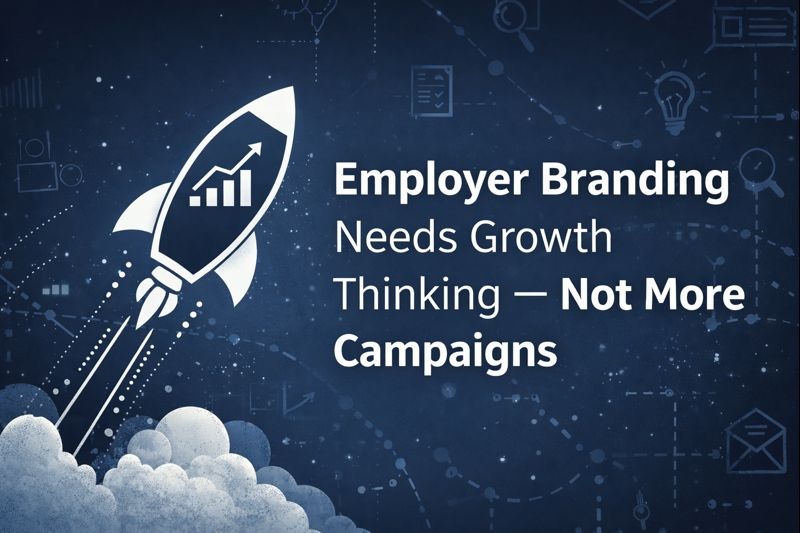May09

Recently, I posted a question to a Design Thinking group on Linkedin:
The response was overwhelming, with over 500 votes and numerous insightful comments.
The poll results indicated the following:
Not Engaging Customers (38%): Ignoring the input and feedback of the customers can lead to the development of solutions that don't meet market needs.
Lack of Top Leadership Support (38%): Without commitment and support from the top, innovation initiatives often struggle to gain traction and achieve their objectives.
Lack of Cultural Support (16%): A culture that does not support innovation can stifle creativity and prevent new ideas from flourishing.
Other (8%): This category included various reasons, highlighting the issue's complexity.
Several group members shared their perspectives on why innovation programs often fail.
Wolfgang Goebl pointed out the lack of enterprise design skills.
Malina Cheeneebash emphasized the importance of designing the innovation program based on the needs and cultural context of the organization, as well as tracking and assessing effectiveness post-rollout.
Jennifer Atanasovski noted that fostering innovation requires aligning many levers, including putting together the right group of people for the specific innovation task.
John Gnotek stressed the importance of onboarding top leadership to ensure the rest of the organization follows.
Dr. Dani Chesson highlighted the lack of an environment where it is safe to fail and the absence of leaders who can foster innovation.
Finally, Katharina Breme reminded us of the common mistake of trying to offer solutions to non-existing customer problems.
Reflecting on these insights, it's clear that leadership plays a crucial role in the success or failure of innovation programs.
Here are some vital leadership-related reasons that may cause innovation programs to fail from my experience.
Lack of Strategic Alignment: Innovation programs must support the company's goals or mission. Without this alignment, the likelihood of failure increases.
Inadequate Resources and Support: Innovation requires adequate resources such as funding, time, and personnel. A lack of these can undermine the program.
Inconsistent Commitment: Leaders must consistently support and engage with the innovation program. Inconsistency can demoralize the team and undermine the program.
Poor Communication: Effective communication of the innovation program's purpose, goals, and progress is crucial. Without it, confusion and misunderstanding can prevail.
Failure to Cultivate a Culture of Innovation: Leaders must promote and encourage a culture that values and rewards innovation.
Risk Aversion: Leaders must be open to calculated risks, as innovation often involves stepping into the unknown.
Lack of Patience: Innovation requires time and patience. Expecting immediate results can lead to premature termination of potentially successful initiatives.
Inadequate Recognition and Reward: Leaders must recognize and reward innovative efforts to motivate the team.
Insufficient Skills and Training: Leaders must ensure the team has the necessary training and skills to innovate effectively.
Inability to Handle Failure: Leaders must create a safe environment for failure, often part of the innovation process.
In conclusion, the success of an innovation program dramatically depends on the leadership's ability to foster a supportive and engaging environment, align the program with the organization's
goals, and provide the necessary resources and rewards.
Innovation is not just about having great ideas but about turning them into reality. But doing that is not always easy. It requires an environment where creativity and risk-taking are encouraged, where failure is seen as a learning opportunity rather than a catastrophe, and where there's a clear vision that everyone can align with.
To avoid the common pitfalls that can lead to the failure of innovation programs, here are a few recommendations:
Engage Customers: Involve customers early and often in the innovation process. Their input and feedback are invaluable in ensuring that the solutions being developed meet market needs and expectations.
Ensure Leadership Support: Gaining commitment and support from the top is critical. Leaders need to be actively involved, providing guidance and resources, setting the tone for the rest of the organization, and demonstrating that innovation is a priority through their actions.
Cultivate a Supportive Culture: Create a culture that values and rewards innovation. This means encouraging new ideas, fostering collaboration, promoting a growth mindset, and making it safe to take risks and make mistakes.
Communicate Effectively: Keep everyone informed about the innovation program's purpose, goals, and progress. Good communication helps prevent confusion and misunderstanding and keeps everyone engaged and motivated.
Invest in Training and Development: Equip your team with the skills and knowledge they need to innovate effectively. This might include training in design thinking, problem solving, creativity, project management, and other relevant areas.
Be Patient and Persistent: Understand that innovation takes time and there will be setbacks along the way. Stay the course, and don't be too quick to abandon initiatives that don't deliver immediate results.
The journey of innovation is challenging and fraught with potential pitfalls. Still, with the right leadership and approach, organizations can navigate these challenges and harness the power of innovation to drive growth and success. Let's take these lessons to heart and strive to improve our innovation efforts.
After all, the future belongs to those who innovate.
By Andrew Constable MBA, XPP, BSMP
Keywords: Business Strategy, Innovation, Leadership
 Concrete’s Carbon Problem and the Race to Fix It
Concrete’s Carbon Problem and the Race to Fix It Employer Branding Needs Growth Hacking — Not More Campaigns
Employer Branding Needs Growth Hacking — Not More Campaigns The Wireless Renaissance: From Tesla’s Dream to Agentic Autonomy
The Wireless Renaissance: From Tesla’s Dream to Agentic Autonomy Collective Resonance: How Consciousness Scales Beyond the Individual
Collective Resonance: How Consciousness Scales Beyond the Individual Autonomous Wingmen: Scaling Sustainable Aviation via NVIDIA NAT and Formation Flight
Autonomous Wingmen: Scaling Sustainable Aviation via NVIDIA NAT and Formation Flight